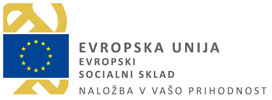Magister inženir tehniške varnosti/magistrica inženirka tehniške varnosti
Selected qualifications
| Name of qualification | Name of qualification: Magister inženir tehniške varnosti/magistrica inženirka tehniške varnosti Add to comparison |
|---|---|
| Translated title (no legal status) | Translated title: Master of Arts in technical safety |
| Type of qualification | Type of qualification: Master’s degree |
| Category of qualification | Category of qualification: Educational Qualification |
| Type of education | Type of education: Master's education |
| Duration |
Duration of education:
2 years
|
| Credits | Credits: 120 credits |
| Admission requirements |
Entry conditions:
Enrolment in the second-cycle Technical Safety programme is open to the following:
|
| ISCED field |
Field:
Services
|
| ISCED subfield | subfield: occupational health and safety |
| Qualification level |
SQF Level:
SQF 8 |
The qualification holder will be able to:
(general competences)
- transfer and apply theoretical knowledge in practice and resolve problems, above all by seeking new sources of knowledge and applying scientific methods,
- experiment and visually communicate various intellectual concepts,
- pursue own learning in their own professional field,
- demonstrate understanding of the interdependence of technology and design,
- show initiative and autonomy in decision-making and in managing the most complex work,
- communicate with co-workers and experts from related disciplines, thus enabling active cooperation on joint work, including in the field of projects relating to safety practice,
- demonstrate professional, ethical and environmental responsibility,
- take part in the planning of new, safer processes and the design of safer products,
- keep abreast of technical and scholarly literature in their own field and transfer analytical findings into practice,
- carry out research and produce new knowledge in the field of technical safety.
(subject-specific competences)
- demonstrate familiarity with the processes, methods of work and conditions that ensure occupational safety,
- demonstrate familiarity with and effectively apply methods of prevention of environmental pollution, fire, injury and health issues,
- demonstrate familiarity with the economics and psychology of security,
- demonstrate familiarity with learning methods and procedures for inductions into safe work,
- demonstrate understanding of the contents of technical and other regulations relating to the company and the technical safety of the environment, and familiarity with procedures for the implementation of such regulations,
- carry out safe planning in construction, mechanical engineering and electrical installations,
- lead services involved in occupational safety and fire safety,
- develop methods of work that ensure increased occupational safety,
- develop knowledge in the field of safety and fire safety,
- carry out supervision in the field of safety and fire safety-
Examination performance is graded as follows: 10 (excellent); 9 (very good: above-average knowledge but with some mistakes); 8 (very good: solid results); 7 (good); 6 (adequate: knowledge satisfies minimum criteria); 5–1 (inadequate). In order to pass an examination, a candidate must achieve a grade between adequate (6) and excellent (10).
In order to enrol in the second year, students must have confirmation of the first year, i.e. signed proof of registration and attendance for all subjects, and have completed all practical classes and other course units in the subjects for the individual year. Students must also have completed 60 credits. Students may repeat a year provided they have completed 20 of the required credits for the year.
Third-cycle doctoral study programmes (SQF level 10)
In order to complete the second-cycle programme, students must complete course units in all subjects of the study programme in which they have enrolled and write and successfully defend a master's thesis in accordance with the provisions of the Master's Thesis Rules adopted by the Senate of the Faculty of Chemistry and Chemical Technology of the University of Ljubljana.
University of Ljubljana, Faculty of Chemistry and Chemical Technology
URL
Awarding body URL:Upcoming event
International Conference: 10 years of Slovenian Qualifications Framework
International Conference: 10 years of Slovenian Qualifications Framework Brdo Congress Centre, Predoslje 39, 4000...
© Center RS za poklicno izobraževanje, 2018. All rights reserved
Sitemap General legal notice Cookie Policy Production: ENKI






